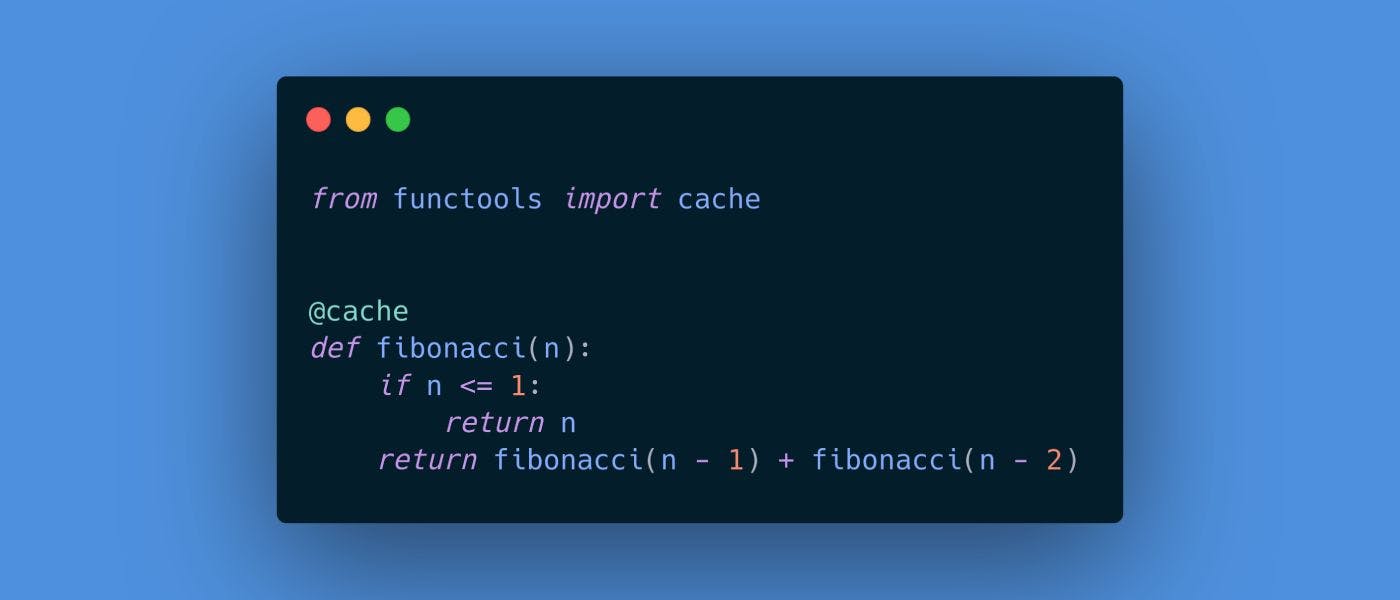Python Decorator性能优化:提升函数性能的7个策略
发布时间: 2024-10-17 12:18:07 阅读量: 24 订阅数: 20 


# 1. Python Decorator简介
Python Decorator(装饰器)是一种用于修改或增强函数功能的高阶函数。它允许用户在不改变原函数定义的情况下,增加新的功能,这是Python中一种极其强大的特性。
装饰器的核心思想在于它利用了函数是Python中的“一等公民”的特性,即函数可以像任何其他对象一样被传递和返回。通过闭包(closure),装饰器能够捕获并保存函数的局部变量,从而在函数执行前后执行额外的代码。
在Python中,装饰器通常被定义为一个接收函数作为参数并返回新函数的函数。新函数通常会调用原始函数,但在此之前可以插入其他代码以修改输入参数、增加日志记录等。
```python
def my_decorator(func):
def wrapper(*args, **kwargs):
# 在原始函数执行前的代码
result = func(*args, **kwargs)
# 在原始函数执行后的代码
return result
return wrapper
```
通过使用`@`符号,我们可以轻松地将装饰器应用到任何函数上。
```python
@my_decorator
def some_function():
pass
```
这种方式使得代码更加简洁和易于理解,同时也为开发者提供了极大的灵活性,使得代码的复用性和可维护性得到了显著提升。在接下来的章节中,我们将深入探讨装饰器的理论基础和高级特性,以及如何在实际项目中应用和优化它们。
# 2. Decorator的理论基础
## 2.1 Decorator的基本概念
### 2.1.1 函数装饰器的定义
在Python中,函数装饰器是一种设计模式,它允许用户在不修改函数本身的情况下,增加额外的功能到函数上。装饰器本质上是一个函数,它接受另一个函数作为参数,并返回一个新的函数,这个新函数通常会增强原始函数的行为。
```python
def my_decorator(func):
def wrapper():
print("Something is happening before the function is called.")
func()
print("Something is happening after the function is called.")
return wrapper
@my_decorator
def say_hello():
print("Hello!")
say_hello()
```
在这个例子中,`my_decorator`是一个装饰器,它包装了`say_hello`函数,并在调用前后打印了一些信息。
#### 代码逻辑解读:
1. `my_decorator`函数接受`func`作为参数,这是一个待装饰的函数。
2. `wrapper`函数被定义在`my_decorator`内部,它在被装饰函数前后添加了一些逻辑。
3. `wrapper`函数返回一个新的函数对象,这个对象是增强后的函数。
4. `@my_decorator`语法糖使得装饰器应用到`say_hello`函数上。
### 2.1.2 装饰器的工作原理
装饰器的工作原理基于闭包(closure)的概念。闭包是一个可以记住其创建时作用域的函数,即使是在函数执行完毕后也能访问外部函数的变量。
```python
def my_decorator(func):
def wrapper():
print("Something is happening before the function is called.")
func()
print("Something is happening after the function is called.")
return wrapper
@my_decorator
def say_hello():
print("Hello!")
# 等价于以下代码
def say_hello():
print("Hello!")
say_hello = my_decorator(say_hello)
say_hello()
```
在这个例子中,`my_decorator`函数返回了`wrapper`闭包函数,而`wrapper`闭包函数保持了对`func`函数的引用。因此,即使原始的`say_hello`函数被装饰后替换了,`wrapper`函数依然可以调用原始的`say_hello`函数。
#### 代码逻辑解读:
1. `my_decorator`函数接收`say_hello`作为参数,并返回`wrapper`闭包函数。
2. `wrapper`闭包函数内部调用`say_hello`,并增加了一些额外的操作。
3. `@my_decorator`语法糖使得装饰器应用到`say_hello`上,替换原始函数。
## 2.2 Decorator的高级特性
### 2.2.1 装饰器的嵌套使用
装饰器可以嵌套使用,即在一个函数上应用多个装饰器,它们会按照从内到外的顺序执行。
```python
def decorator_one(func):
def wrapper():
print("Decorator One")
func()
return wrapper
def decorator_two(func):
def wrapper():
print("Decorator Two")
func()
return wrapper
@decorator_one
@decorator_two
def say_hello():
print("Hello!")
say_hello()
```
在这个例子中,`decorator_two`首先被应用到`say_hello`函数上,然后`decorator_one`被应用到由`decorator_two`返回的函数上。
#### 代码逻辑解读:
1. `decorator_two`首先被调用,并返回`wrapper`函数。
2. `decorator_one`接着被调用,其参数是`decorator_two`返回的`wrapper`函数。
3. 最终,`say_hello`函数被`decorator_one`返回的`wrapper`函数替换。
### 2.2.2 带参数的装饰器
装饰器本身也可以接受参数,这种装饰器称为高阶装饰器。
```python
def decorator_with_args(arg):
def my_decorator(func):
def wrapper():
print(f"Something is happening before the function is called with arg: {arg}")
func()
print(f"Something is happening after the function is called with arg: {arg}")
return wrapper
return my_decorator
@decorator_with_args("Hello")
def say_hello():
print("Hello!")
say_hello()
```
在这个例子中,`decorator_with_args`接受一个参数`arg`,并返回一个装饰器`my_decorator`,后者接受一个函数`func`。
#### 代码逻辑解读:
1. `decorator_with_args`接收参数`arg`并返回`my_decorator`装饰器。
2. `my_decorator`接收`func`作为参数,并返回`wrapper`闭包函数。
3. `wrapper`函数在调用`func`前后打印了一些信息,并包含了`arg`参数。
### 2.2.3 装饰器与函数注解
Python装饰器与函数注解可以一起使用,为函数参数和返回值提供额外的元数据。
```python
def my_decorator(func):
def wrapper(*args, **kwargs):
print("Something is happening before the function is called.")
result = func(*args, **kwargs)
print("Something is happening after the function is called.")
return result
return wrapper
@my_decorator
def add(a: int, b: int) -> int:
return a + b
result = add(2, 3)
print(result)
```
在这个例子中,`add`函数使用了类型注解,这些注解在装饰后的`wrapper`函数中仍然可用。
#### 代码逻辑解读:
1. `my_decorator`装饰器的`wrapper`函数接收任意数量的位置参数和关键字参数。
2. `add`函数的类型注解`a: int, b: int -> int`在`wrapper`函数中没有直接使用,但可以通过反射获取。
## 2.3 Decorator的内部实现机制
### 2.3.1 使用闭包实现装饰器
闭包是装饰器实现的核心机制,它允许在函数执行完毕后仍然访问外部函数的变量。
```python
def make_decorator(func):
cache = {}
def wrapper(*args):
if args in cache:
return cache[args]
else:
result = func(*args)
cache[args] = result
return result
return wrapper
@make_decorator
def add(a, b):
return a + b
print(add(2, 3)) # 使用闭包缓存结果
print(add(2, 3)) # 直接返回缓存的结果
```
在这个例子中,`make_decorator`函数返回了`wrapper`闭包函数,它使用了一个外部的`cache`字典来存储和检索函数的结果。
#### 代码逻辑解读:
1. `make_decorator`函数返回了一个闭包`wrapper`。
2. `wrapper`函数检查参数是否在`cache`字典中。
3. 如果参数存在,直接返回缓存的结果;否则,调用函数并将结果存入`cache`。
### 2.3.2 使用functools.wraps优化装饰器
`functools.wraps`用于改进装饰器的元数据,使得装饰后的函数保留原始函数的信息。
```python
from functools import wraps
def my_decorator(func):
@wraps(func)
def wrapper(*args, **kwargs):
print("Something is happening before the function is called.")
result = func(*args, **kwargs)
print("Something is happening after the function is called.")
return result
return wrapper
@my_decorator
def say_hello():
"""Greet the user."""
print("Hello!")
print(say_hello.__name__) # 输出函数的名称
print(say_hello.__doc__) # 输出函数的文档字符串
```
在这个例子中,`@wraps(func)`确保`wrapper`函数继承了`func`函数的名称和文档字符串。
#### 代码逻辑解读:
1. `@wraps(func)`装饰器被应用于`wrapper`函数,保留了`func`的元数据。
2. `say_hello`函数保留了其原始的名称和文档字符串。
3. 这有助于保持代码的可读性和可维护性。
# 3. Decorator的性能分析
## 3.1 性能测试的基础知识
### 3.1.1 性能测试的重要性
在现代软件开发中,性能测试是确保应用程序高效运行的关键环节。特别是在使用Decorator时,由于它们在底层
0
0





